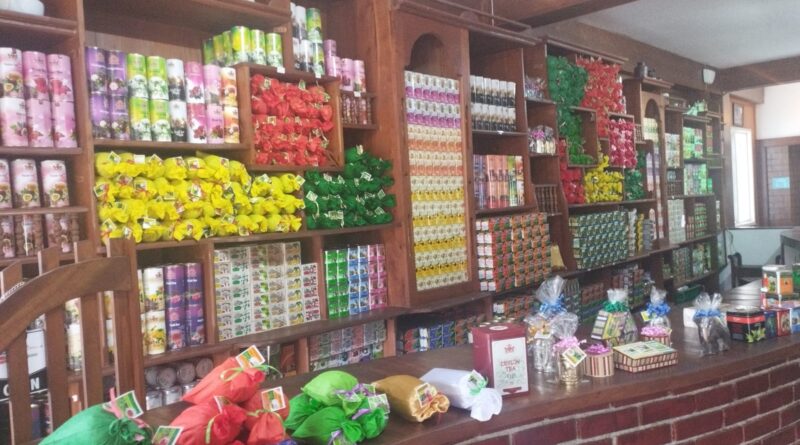Exploring the Rich World of Sri Lankan Tea: A Deep Dive into the Geragama Tea Factory
- SRI LANKA SERIES – 3
- Sip Through History: Giragama Tea Plantation Offers a Journey from Leaf to Cup in Sri Lanka’s Lush Highlands
- Ceylon Tea Exports Surge to New Highs in 2024, Strengthening Sri Lanka’s Legacy as a Global Tea Powerhouse”
BILKULONLINE
By Rafat Quadri
Ahmedabad, Nov 6: Tea is not just a drink; it’s a story brewed from leaves, sunshine, and a touch of Sri Lankan magic !
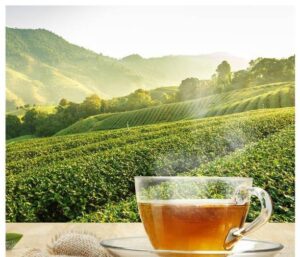
Sri Lanka, formerly known as Ceylon, has earned a legendary reputation for its tea, a beverage cherished across the world. Nestled in the Indian Ocean and known as “The Pearl of the Indian Ocean,” Sri Lanka’s unique topography and climate create ideal conditions for growing tea. With lush, mountainous landscapes, dramatic hillsides, and tropical sunshine, the island’s tea estates produce a remarkable variety of flavors, ranging from strong black teas to delicate white teas.
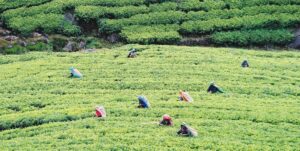

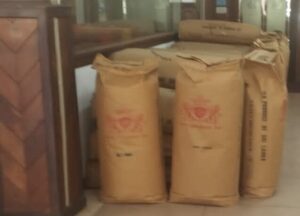
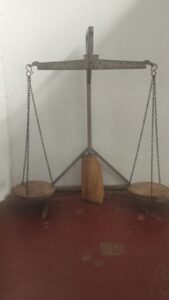
Among Sri Lanka’s tea-producing sites, the Giragama Tea Plantation, near Kandy, stands out as a historical icon and an immersive experience for visitors seeking to understand the island’s tea heritage.
The Heritage of Ceylon Tea
The tea plant, scientifically known as Camellia sinensis, thrives in Sri Lanka’s diverse microclimates. This variety is what allows the island to produce three main types of Ceylon tea:
Black Tea: Known for its robust flavor, which pairs well with milk and sugar.
Green Tea: A lighter tea with a slightly grassy, fresh taste, more popular with those seeking mild caffeine.
White Tea: A rare and high-quality tea with subtle, sweet notes, often grown in Nuwara Eliya, and revered for its delicate flavor and high antioxidant content.
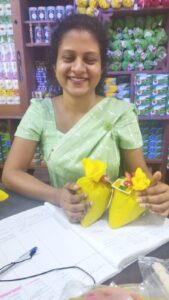
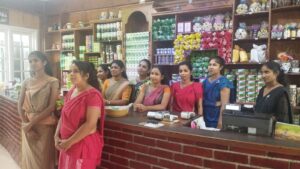
Black tea is Sri Lanka’s most famous export, often enjoyed strong with milk and sugar, particularly in Asia. For a true experience, however, it’s best sampled plain to savor its distinct, natural flavors.

Giragama Tea Plantation: A Step into History
Giragama, one of Sri Lanka’s oldest tea plantations, offers more than just tea production; it’s a captivating journey through the art and science of tea-making. Located in the rolling hills near Kandy, the plantation is a serene yet lively site where green tea bushes stretch endlessly across the landscape, punctuated by the colorful saris of tea pluckers as they work.
What Makes Giragama Unique?
Historical Significance: As one of Sri Lanka’s pioneering tea estates, Giragama has been integral to the island’s tea culture for over a century. Here, age-old traditions blend seamlessly with modern innovations, allowing visitors to witness both the ancient and contemporary sides of tea-making.
Authentic Tea-Making Experience: The on-site factory provides an inside look at the journey of tea leaves from plucking to processing. Traditional methods are still followed, and visitors can observe each step, from withering and rolling to drying and sorting.
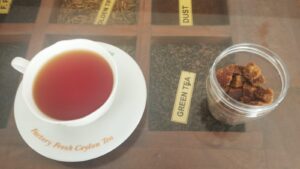
Picturesque Surroundings: The setting itself is breathtaking, with rows of neatly planted tea bushes on scenic hills. As you explore, the sights, sounds, and scents immerse you in the environment that gives Ceylon tea its unique qualities.
The Visitor Experience at Giragama Tea Factory
A visit to Giragama Tea Factory is as much an education as it is a sensory experience. Here’s what awaits visitors:
Guided Tours: Knowledgeable guides walk visitors through the entire tea-making process, explaining each stage of production. They share insights on how different methods affect the flavor and quality of tea, deepening the understanding of why Sri Lankan tea is so highly prized worldwide.
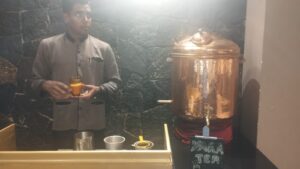
Tea Tasting: No visit would be complete without sampling the tea itself. Freshly brewed on-site, the tea tasting experience allows visitors to appreciate the nuanced flavors of black, green, and white teas. Enjoying a cup while overlooking the estate brings a special connection to the drink, tying each sip to the lush hills from which it came.
Tea Plucking Season: Visiting during tea-plucking season is an added bonus, as it offers a firsthand look at the meticulous process of selecting tea leaves. Skilled tea pluckers carefully pick only the tender leaves, a practice essential to maintaining quality.
On-Site Tea Shop: Giragama offers visitors the chance to take home some of their tea. The on-site shop sells various teas produced on the plantation, a perfect souvenir embodying the flavors of Sri Lanka’s highlands.
Ceylon Tea and Sustainability
Sri Lanka’s tea industry is not only about quality but also about sustainability. Major players like Dilmah Ceylon Tea Company, Akbar Brothers Pvt Ltd, Jafferjee Brothers, and Ceylon Tea Services PLC are committed to sustainable practices and are backed by organizations promoting environmental and ethical standards in tea production. This dedication ensures that the island’s tea culture can be enjoyed by future generations.
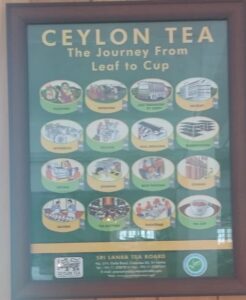
Brewing the Perfect Cup of Ceylon Tea
Brewing Ceylon tea is straightforward but allows room for personal preference:
Use one teaspoon of tea leaves per cup of boiling water.
Steep for 3-5 minutes, depending on the desired strength.
Strain and enjoy plain, or add milk and sugar for a richer experience.
Why Visit Giragama?
Giragama Tea Plantation is more than just a destination; it’s an invitation to step into a world that honors tradition, quality, and the spirit of Sri Lanka’s highlands. Each cup tells a story of passion and skill, and the opportunity to witness the entire journey of tea production—from leaf to cup—adds an unforgettable layer to the experience.
Whether you’re a tea enthusiast or a curious traveler, visiting Giragama offers a deep connection to Sri Lanka’s past and present, one sip at a time. It’s an experience that brings you closer to the heart of this beautiful island, steeped in the essence of its culture, climate, and character.
Sri Lanka’s Tea Exports Reach Six-Year High in 2024, Projected to Earn $1.3 Billion
Tea production remains a critical component of Sri Lanka’s economy, contributing significantly to both export revenue and employment. As of 2024, the country’s tea exports are projected to generate approximately $1.3 billion. In the first quarter alone, export earnings reached $354 million—a six-year high—due to strong demand in international markets such as Iraq, UAE, and Russia. This period saw a 15% increase in export volume compared to the previous year, totaling around 62 million kilograms.

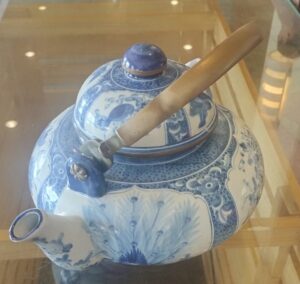
The tea industry not only provides direct employment but also benefits the rural economy, especially through plantation jobs. However, rising production costs, largely due to increases in fuel, energy, and input prices, have pressured margins. The government has been actively engaging with industry stakeholders to address these challenges, including exploring technological advancements like AI and drones to improve yields.
Sri Lanka is also enhancing its market positioning through initiatives such as pursuing Geographical Indication (GI) certification for Ceylon Tea within the European Union. This designation would emphasize its unique qualities and potentially open premium market opportunities, aligning with the Tea Board’s strategy to increase exports of high-value tea products over bulk exports.
With ongoing collaboration between the government and industry players, including new policy measures expected in 2025, Sri Lanka’s tea sector aims to strengthen its global standing and economic contribution further, despite challenges from high production costs and recent adverse weather conditions
Kindly visit the link below to visit our You Tube Channel – Like & Subscribe, Thanks. https://youtu.be/dpwTKUnUw0o

